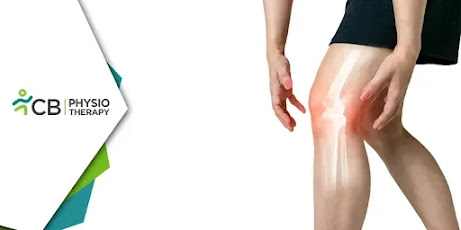Rheumatoid Arthritis (RA) is a chronic autoimmune disease that can significantly affect the quality of life of those diagnosed with it. The good news is that with proper management, patients can lead active and fulfilling lives. A key component of this is that physiotherapy can help manage arthritis pain, improve joint mobility, and maintain independence. In this comprehensive guide, we'll explore the significance of physiotherapy and outline essential dos, don'ts, and precautionary measures for RA patients.
Role of Physiotherapy in Managing Rheumatoid Arthritis
Dos
1. Consult a Physiotherapist:DO seek out a qualified physiotherapist with experience in treating RA patients. They can evaluate your condition, create a personalized exercise and therapy plan, and monitor your progress.
2. Establish an Exercise Routine:
DO work with your physiotherapist to develop a regular exercise routine that focuses on joint mobility, strength, and flexibility. Low-impact exercises like swimming, cycling, or gentle yoga can be highly beneficial.
3. Learn Proper Techniques:
DO learn proper techniques for exercises and daily activities. Your physiotherapist can teach you how to move safely, avoid unnecessary strain on your joints, and reduce the risk of injury.
4. Heat and Cold Therapy:
DO use heat and cold therapy as recommended by your physiotherapist. These techniques can help reduce pain and inflammation in affected joints.
5. Assistive Devices:
DO consult with your physiotherapist about the use of assistive devices such as braces, orthotics, or mobility aids. These can reduce pressure on your joints during daily activities.
Don'ts
1. Don't Push Too Hard:DON'T engage in high-intensity or high-impact activities without consulting your physiotherapist. Overexertion can lead to flare-ups and increased pain.
2. Avoid Prolonged Inactivity:
DON'T stay sedentary for extended periods. Prolonged inactivity can worsen joint stiffness and lead to muscle weakness. Find a balance between rest and movement.
3. Don't Disregard Pain:
DON'T ignore pain during exercises or daily activities. If you experience pain, stop the activity and consult your physiotherapist to adjust your routine.
4. Avoid Extreme Temperatures:
DON'T expose your joints to extreme temperatures without precautions. Extreme cold or heat can exacerbate RA symptoms. Dress appropriately for the weather and use temperature-appropriate therapies.
5: Don't Skip Physiotherapy Appointments:
Don't skip physiotherapy sessions. Consistency is key to reaping the benefits of physiotherapy in managing RA.
Additional Dos and Don'ts for RA Patients
Dos
1. Medication Management:DO follow your prescribed treatment plan, including medications. Communicate any concerns or side effects to your healthcare provider promptly.
2. Maintain a Balanced Diet:
DO focus on a diet rich in antioxidants, omega-3 fatty acids, and low in saturated fats. Consult a nutritionist if necessary for personalized dietary guidance.
3. Manage Stress:
DO practice stress-reduction techniques such as meditation, deep breathing, or engaging in hobbies that promote relaxation.
4. Seek Support:
DO seek emotional support from friends, family, or a therapist to help you cope with the emotional challenges of living with RA.
Don'ts
1. Don't Neglect Medication:DON'T skip doses of your prescribed medications or discontinue them without consulting your healthcare provider. Consistency in medication is crucial for managing the disease.
2. Avoid Excessive Alcohol:
DON'T consume excessive alcohol, as it can interact negatively with RA medications and increase inflammation.
3. Don't Neglect Your Weight:
DON'T ignore maintaining a healthy weight. Being overweight can place additional strain on your joints.
4. Don't Compare Yourself to Others:
DON'T compare your progress or limitations to others with RA. Each person's experience is unique, and it's important to focus on your own journey.
5. Don't Ignore Emotional Health:
DON'T neglect your mental and emotional well-being. Seek professional help when necessary to address stress, depression, and other emotional challenges.
Precautionary Measures
1. Infection Prevention:DO take precautions to avoid infections. RA patients may have a higher risk of infections, so practice good hygiene, get vaccinated as recommended, and consult your healthcare provider promptly if you suspect an infection.
2. Regular Eye Exams:
DO schedule regular eye exams. RA can affect the eyes, and early detection and treatment of eye issues are essential.
3. Bone Health:
DO pay attention to your bone health. RA and some medications can increase the risk of osteoporosis. Discuss bone health with your healthcare provider and consider bone density testing if advised.
4. Fall Prevention:
DO take measures to prevent falls. RA can affect balance and coordination. Ensure your living space is safe, and consider exercises to improve balance and reduce the risk of falls.
5. Stay Informed:
DO stay informed about RA and its treatment options. Medical advancements and new treatments are continually emerging, so regularly discuss your treatment plan with your healthcare provider.
6. Adaptive Equipment:
DO consider the use of adaptive equipment as recommended by healthcare professionals. These tools can make daily activities safer and more manageable.
7. Stress Management:
DO prioritize stress management. Chronic stress can exacerbate RA symptoms. Engage in activities that promote relaxation and seek emotional support when needed.
The more you know about RA, its causes, symptoms, and treatments, the better equipped you will be to manage the condition effectively. Seek information from reputable sources and consult with healthcare professionals.
Avoid self-diagnosis or relying solely on non-professional sources for medical advice. While it's essential to educate yourself, only a qualified healthcare provider can provide an accurate diagnosis and treatment plan.




